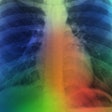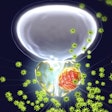Dear LabPulse Member,
It's still early days for the implementation of artificial intelligence (AI) into pathology workflow, though some labs have been transitioning to whole slide imaging from microscope-based practice.
The potential to speed up workflow and access large datasets of case histories to improve diagnosis is propelling companies and providers alike toward a new future of digital pathology images. The global market for artificial intelligence in healthcare is currently worth about $1.9 billion and is expected to reach $11.4 billion by 2024, according to a new report by LabPulse.com sister company Kalorama Information. The AI projects profiled in the report include Freenome's multiomics testing and GE Healthcare's hospital command centers.
Artificial intelligence naturally raises concerns with physicians who are worried about being replaced by software algorithms. In pathology, there are already some troubling workforce issues, with reports indicating that fewer residents are selecting the specialty and that there may be a shortage in the future. In an interview with LabPulse.com, Dr. Ian Harrold, a fellow in transfusion medicine at the University of Pittsburgh Medical Center, explains why he thinks there isn't cause to be alarmed at the moment. Nevertheless, pathologists need to improve their image with medical school students, as well as in the broader medical community.
Meanwhile, the College of American Pathologists (CAP) is keen to gather and disseminate information about workforce issues. A survey of job search geographic relocations recently published by CAP in the Archives of Pathology & Laboratory Medicine found that the type of training during residency correlates with the need for relocation to get a job. Those with residencies in anatomic pathology or clinical pathology were more likely to stay in their institution of training and/or city, for example. Overall, the survey suggests a stable market, the group noted.
In recent clinical news, researchers at the Cold Spring Harbor Laboratory and the U.S. National Institute of Neurological Disorders and Stroke just reported intriguing results from the prospective Traumatic Head Injury Neuroimaging Classification (THINC) study in the journal Brain. An analysis of postmortem brain tissue in the MRI-guided pathology study suggests that traumatic microbleeds reflect vascular rather than nerve damage. Traumatic microbleeds could be used as biomarkers to guide drug treatment in the future, the researchers concluded.


















